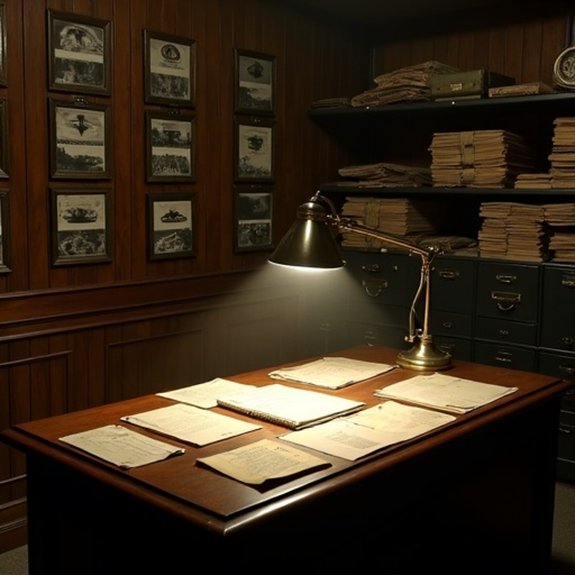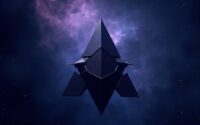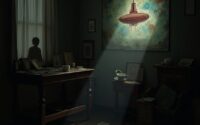Operation Blue Book: Declassified Cases
The Air Force’s Operation Blue Book documented over 12,000 UFO reports during its seventeen-year investigation, yet 701 cases couldn’t be explained. Officers witnessed egg-shaped craft leaving physical evidence, while multiple drivers experienced their vehicles mysteriously stalling near glowing objects. These declassified files reveal the government’s systematic approach to investigating aerial phenomena that defied conventional explanation. What they discovered in those unexplained cases continues to challenge official narratives about what’s really happening in our skies.
Introduction

When the United States Air Force launched Project Blue Book in 1952, it marked the beginning of the most thorough official investigation into unidentified flying objects in American history. The program’s mission was straightforward: determine if UFOs posed a national security threat and analyze UFO-related data scientifically.
Operating from Wright-Patterson Air Force Base in Ohio, Project Blue Book investigated 12,618 UFO reports over seventeen years. Military personnel, scientists, and analysts worked to explain aerial phenomena that puzzled civilians and service members alike. They’d categorize each case, conduct interviews, examine physical evidence when available, and consult astronomical data.
The project concluded in 1969, leaving behind thousands of declassified documents that continue to fascinate researchers today. While most cases received conventional explanations, 701 remain officially “unidentified.”
Air Force’s 1952 Establishment
Although the Air Force had investigated UFO reports through earlier programs like Project Sign and Project Grudge, they established Project Blue Book in March 1952 under mounting public pressure and a surge of sightings. Captain Edward J. Ruppelt took command of the new project, bringing scientific rigor and systematic investigation methods that his predecessors hadn’t employed.
The Air Force tasked Blue Book with three primary objectives: determining if UFOs posed a national security threat, analyzing UFO-related data scientifically, and identifying whether these phenomena displayed advanced technology. They’d headquartered the operation at Wright-Patterson Air Force Base in Ohio, where investigators collected reports from military personnel, civilian pilots, and everyday citizens. The project’s creation coincided with the Washington D.C. UFO incident, which intensified government scrutiny of aerial phenomena.
Notable Cases or Sightings

Project Blue Book investigated thousands of reports during its seventeen-year operation, but several cases stood out for their credibility and mysterious circumstances. The 1964 Socorro incident involved police officer Lonnie Zamora witnessing an egg-shaped craft with landing gear and two small beings in New Mexico. Multiple witnesses reported the 1965 Exeter incident, where a large silent object with pulsating red lights pursued teenagers and police officers in New Hampshire.
The 1957 Levelland case generated fifteen separate reports of vehicles stalling when a glowing egg-shaped object approached. In 1966, over one hundred witnesses, including police officers, observed strange lights maneuvering above Portage County, Ohio. These cases couldn’t be explained by conventional phenomena, weather balloons, or misidentified aircraft, leaving investigators puzzled about their true nature.
Common Theories or Explanations
Five primary explanations dominated Project Blue Book’s approach to UFO investigations throughout its existence. Investigators first considered astronomical phenomena—planets, stars, meteors, and satellites often created visual illusions that witnesses couldn’t identify. Weather balloons and experimental aircraft formed the second category, as military testing frequently occurred without public knowledge. Atmospheric conditions like temperature inversions, ball lightning, and unusual cloud formations provided natural explanations for many reports.
The fourth category involved psychological factors. Investigators recognized that misperception, suggestibility, and mass hysteria influenced witness testimonies. Some individuals fabricated stories for attention or profit. The fifth explanation encompassed birds, reflections, and conventional aircraft seen under unusual circumstances. Blue Book’s staff applied these theories systematically, resolving over 90% of cases through conventional means while leaving 701 sightings officially unexplained.
Frequently Asked Questions
Where Can I Access the Full Declassified Project Blue Book Archives Online?
They’ll find the complete declassified Project Blue Book archives on the National Archives website at archives.gov/research/military/air-force/ufos. The collection’s also available through projectbluebook.theblackvault.com, where researcher John Greenewald Jr. has compiled all 130,000 pages.
How Much Did Operation Blue Book Cost Taxpayers During Its Operation?
The Air Force hasn’t released specific budget figures for the program’s 1952-1969 run. Estimates suggest it cost roughly $60,000 annually in 1960s dollars, totaling around $1-2 million over seventeen years before inflation adjustments.
What Happened to the Physical Evidence Collected During Blue Book Investigations?
The Air Force transferred most physical evidence to various archives and museums after Blue Book’s closure in 1969. Some materials went to the National Archives, while others were reportedly destroyed or remain unaccounted for today.
Which Specific Military Personnel Led Project Blue Book Throughout Its Existence?
Captain Edward Ruppelt led Blue Book from 1952-1953, followed by Captain Charles Hardin, Captain George Gregory, Major Robert Friend, and finally Lieutenant Colonel Hector Quintanilla who oversaw the project’s closure in 1969.
Did Any Blue Book Investigators Later Admit to Covering up Evidence?
Yes, several Blue Book personnel later made admissions. J. Allen Hynek, the project’s scientific consultant, revealed he’d been pressured to debunk cases. Captain Edward Ruppelt also criticized the Air Force’s dismissive approach toward UFO investigations.


